Samsung has transformed from a small trading company into a global technology powerhouse that shapes our digital landscape. This Samsung company analysis examines the conglomerate’s remarkable journey, current financial position, and future trajectory. From semiconductors to smartphones, Samsung’s influence extends across multiple industries, making it one of the most valuable brands worldwide. Let’s explore how this South Korean giant has evolved and what lies ahead in its innovation pipeline.
Historical Development of Samsung
Samsung’s journey from a trading company to a global technology leader spans over eight decades
From Humble Beginnings to Global Dominance
Founded in 1938 by Lee Byung-chul as a small trading company in Su-dong (now Ingyo-dong), Samsung initially dealt in dried fish, groceries, and noodles. The company’s name, “Samsung,” means “three stars” in Korean, symbolizing something “powerful and eternal.” Following the Korean War, Samsung expanded into textiles, insurance, securities, and retail before making its pivotal entry into electronics in the late 1960s.
The 1970s marked Samsung’s serious venture into electronics with the establishment of Samsung Electronics. The company produced its first black-and-white television sets, laying the foundation for what would become one of its core businesses. By the 1980s, Samsung began investing heavily in research and development, recognizing that innovation would be crucial for growth in the competitive electronics market.
Key Milestones in Samsung’s Growth (1980s-Present)
- 1980s: Established overseas manufacturing facilities in Portugal (1982), New York (1984), Tokyo (1984), and England (1987)
- 1990s: Developed the world’s first 64MB DRAM chip (1992) and built a semiconductor plant in Austin, Texas (1996)
- 2000s: Became a leader in LCD TV manufacturing and entered the smartphone market
- 2010s: Launched the Galaxy smartphone series, becoming the world’s largest smartphone manufacturer
- 2020s: Pioneered foldable smartphone technology and expanded its semiconductor leadership
Diversification Strategy
Samsung’s growth strategy has centered on diversification across multiple technology sectors. This approach has created a robust business model that can withstand market fluctuations in any single industry. The company’s major business divisions now include:
Consumer Electronics
TVs, home appliances, digital imaging devices, and medical equipment form the backbone of Samsung’s consumer-facing business. The company has maintained market leadership in TV manufacturing for over 15 years.
IT & Mobile Communications
Smartphones, tablets, wearable devices, and network systems represent Samsung’s most visible product category to consumers worldwide, with the Galaxy series being its flagship brand.
Device Solutions
Semiconductors, memory chips, and display panels serve both Samsung’s internal manufacturing needs and external clients, including competitors like Apple.
This diversification strategy has been crucial to Samsung’s resilience, allowing the company to offset downturns in one sector with growth in others. For instance, when smartphone sales plateaued in recent years, Samsung’s semiconductor business provided stability and growth.
Financial Stability and Market Position
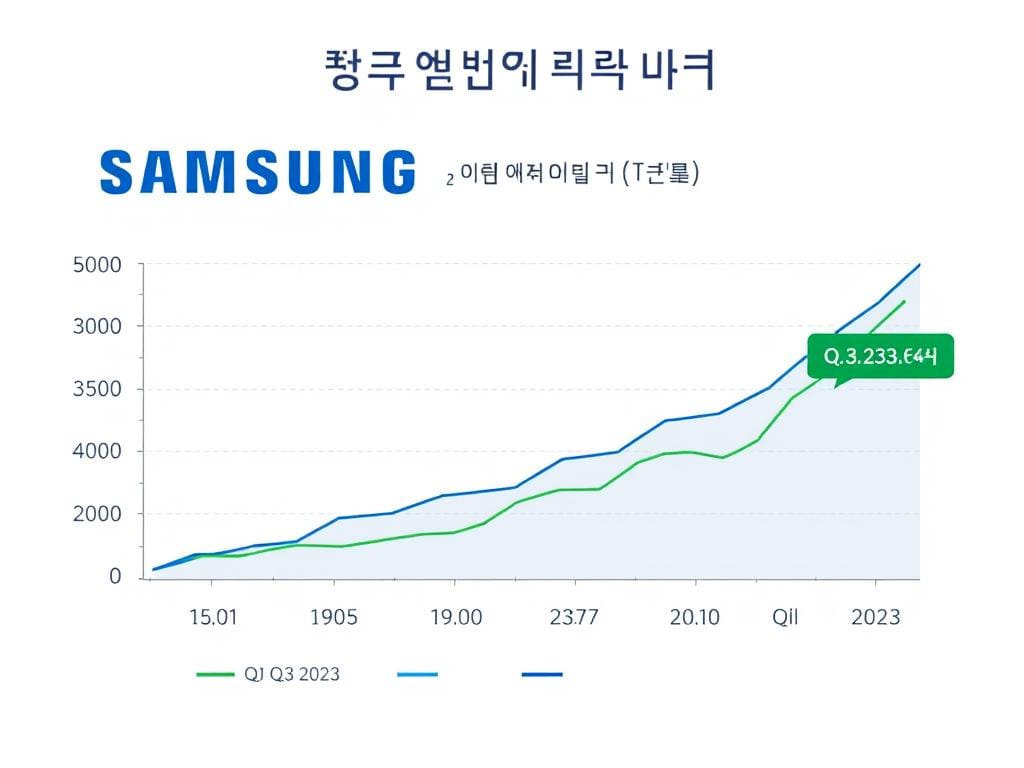
Samsung’s financial performance demonstrates resilience despite market fluctuations
Analysis of Recent Financial Performance
Samsung’s financial stability remains strong despite recent market challenges. In Q3 2023, the company reported consolidated revenue of ₩67.40 trillion (approximately $50 billion), with an operating profit of ₩2.43 trillion. While these figures represent a decline from peak pandemic-era performance, they demonstrate Samsung’s ability to maintain substantial revenue streams even during industry downturns.
| Financial Metric | Q3 2023 | Q2 2023 | Q3 2022 | YoY Change |
| Revenue | ₩67.40T | ₩60.01T | ₩76.78T | -12.2% |
| Operating Profit | ₩2.43T | ₩0.67T | ₩10.85T | -77.6% |
| Net Profit | ₩5.84T | ₩1.72T | ₩9.39T | -37.8% |
The semiconductor division, historically Samsung’s profit engine, has faced challenges due to global market conditions. However, analysts project a recovery in 2024 as inventory adjustments complete their cycle and demand for high-performance computing and AI applications increases.
Debt-to-Equity Ratio Comparison
Samsung maintains a conservative financial structure compared to industry peers. This prudent approach provides flexibility during market downturns and capacity for strategic investments.
| Company | Debt-to-Equity Ratio | Current Ratio | Financial Stability Assessment |
| Samsung | 0.12 | 2.63 | Very Strong |
| Apple | 1.73 | 0.94 | Strong |
| Sony | 0.28 | 0.88 | Moderate |
Semiconductor Market Recovery Projections
The semiconductor industry, critical to Samsung’s profitability, is poised for recovery. After a challenging 2023 marked by inventory corrections and reduced demand, industry analysts project a rebound beginning in early 2024. Samsung’s significant investments in advanced manufacturing processes position the company to capitalize on this recovery.
Samsung’s semiconductor division is expected to see operating profit growth of 75-80% in 2024 as memory chip prices stabilize and demand for high-bandwidth memory (HBM) increases for AI applications.
Get Exclusive Semiconductor Market Insights
Stay ahead of market trends with our quarterly analysis of the semiconductor industry. Our experts provide detailed projections that can inform your investment decisions.
Future Outlook and Strategic Direction

Samsung’s AI innovation centers are developing next-generation technologies that will power future products
AI-Driven Product Roadmaps (2024-2025)
Artificial intelligence stands at the center of Samsung’s future strategy. The company is integrating AI capabilities across its product ecosystem, from smartphones to home appliances. Samsung’s “Galaxy AI” initiative represents a significant investment in on-device AI processing that enhances user experiences while maintaining privacy.
For 2024-2025, Samsung has outlined an ambitious AI roadmap that includes:
- On-device AI processing: Reducing cloud dependence for faster response times and enhanced privacy
- Multimodal AI systems: Enabling devices to process and respond to combinations of voice, text, and visual inputs
- AI-enhanced photography: Computational photography features that rival professional camera results
- Personalized user experiences: Adaptive interfaces that learn user preferences and behaviors
- Interconnected ecosystem: Seamless AI-driven interactions between Samsung devices
Foldable Smartphone Market Dominance Strategy
Samsung has pioneered the foldable smartphone category and maintains a clear lead over competitors. The company’s strategy for maintaining dominance in this high-margin segment includes:
Samsung’s Foldable Advantages
- Established manufacturing expertise with multiple generations of refinement
- Proprietary ultra-thin glass technology
- Robust app ecosystem optimized for foldable form factors
- Strong brand recognition in the premium segment
- Diverse product lineup covering multiple price points and form factors
Challenges to Address
- Persistent durability concerns among potential customers
- High price points limiting mass market adoption
- Increasing competition from Chinese manufacturers
- Need for more compelling use cases beyond the form factor
- Battery life limitations due to form factor constraints
Industry analysts project the foldable smartphone market to grow at a CAGR of 35% through 2025, with Samsung positioned to maintain at least 60% market share if it continues its current innovation pace and gradually reduces entry prices.
Sustainability Initiatives and Environmental Commitments
Samsung has established ambitious environmental goals as part of its “Galaxy for the Planet” initiative. By 2025, the company aims to:
- Incorporate recycled material in all new mobile products
- Eliminate all plastics in mobile packaging
- Reduce standby power consumption of all smartphone chargers to below 0.005W
- Achieve zero waste to landfill from manufacturing facilities
These initiatives respond to growing consumer demand for environmentally responsible products and may provide Samsung with a competitive advantage as sustainability becomes increasingly important to purchasing decisions.
Upcoming Products and Innovation Pipeline
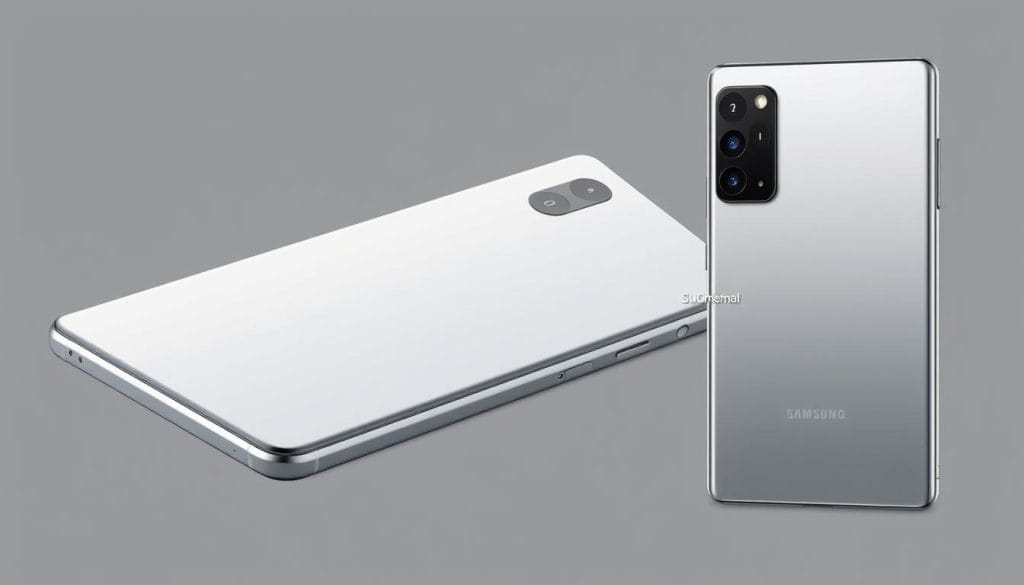
Leaked renders suggest the Galaxy S24 Ultra will feature a refined design and enhanced camera system
Galaxy S24 Ultra: Leaked Specifications
Samsung’s flagship Galaxy S24 Ultra is expected to launch in early 2024 with several notable upgrades. According to reliable industry sources, the device will feature:
| Feature | Specification | Improvement over S23 Ultra |
| Processor | Snapdragon 8 Gen 3 (4nm) | 25% faster CPU, 40% more efficient GPU |
| Main Camera | 200MP with improved sensor | Enhanced low-light performance, 8K video at 60fps |
| Display | 6.8″ QHD+ AMOLED, 120Hz | Peak brightness of 2,200 nits, reduced bezels |
| Battery | 5,000mAh | Same capacity, but 30% improved efficiency |
| RAM/Storage | 12GB/16GB RAM, up to 1TB storage | Faster LPDDR5X RAM, UFS 4.0 storage |
| AI Features | On-device AI processing | New Galaxy AI suite with real-time translation |
The Galaxy S24 Ultra represents Samsung’s continued push into AI-enhanced mobile experiences, with significant processing power dedicated to on-device artificial intelligence. This approach aims to differentiate Samsung in an increasingly competitive premium smartphone market.
Next-Generation Foldable Devices
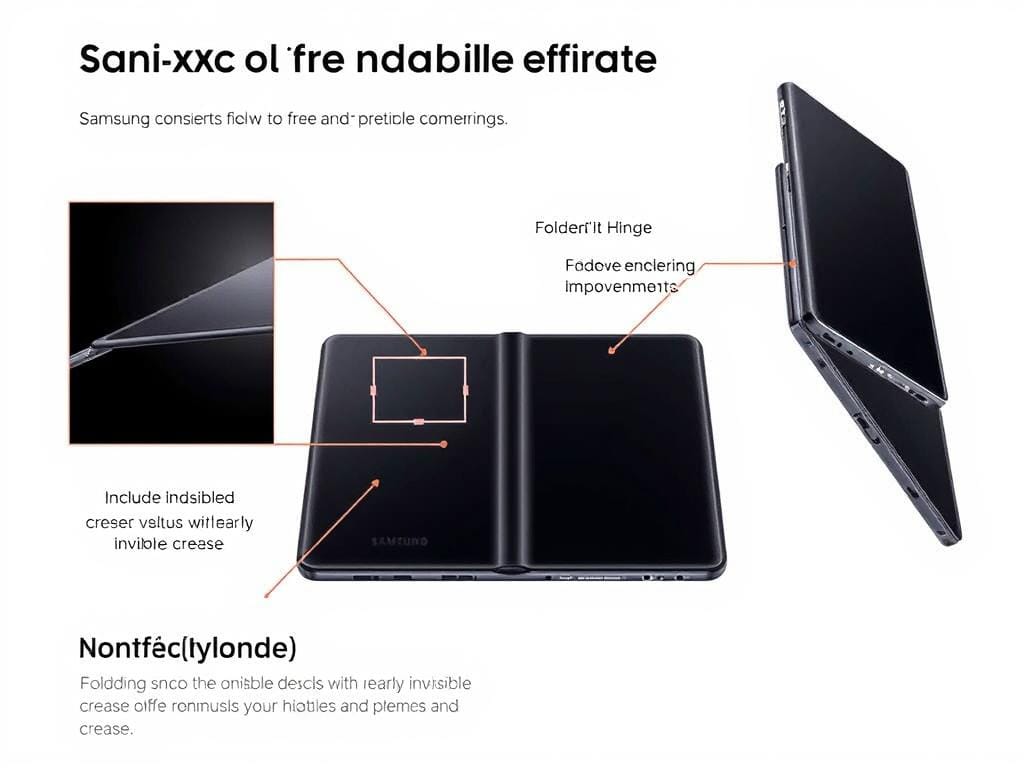
Samsung’s next-generation foldables are expected to feature a redesigned hinge with minimal visible crease
Samsung’s Z Fold6 and Z Flip6 are anticipated to arrive in Q3 2024 with significant improvements to address persistent user concerns:
Galaxy Z Fold6 Enhancements
- Redesigned hinge mechanism with 50% less visible crease
- Improved aspect ratio for better usability when folded
- Enhanced durability with IPX8 water resistance
- S Pen support with reduced latency
- Snapdragon 8 Gen 3 processor with dedicated AI core
Galaxy Z Flip6 Enhancements
- Larger cover display with expanded functionality
- Improved camera system with computational photography
- Enhanced battery life (projected 20% improvement)
- New flex mode applications for content creation
- More durable ultra-thin glass (UTG) display
Bespoke Smart Home Ecosystem Expansion
Samsung is expanding its Bespoke home appliance lineup with deeper AI integration and enhanced connectivity. The company’s vision centers on creating a seamless smart home experience where appliances communicate with each other and adapt to user preferences.

Samsung’s Bespoke smart home ecosystem creates a unified experience across appliance categories
Key upcoming additions to the Bespoke lineup include:
- AI-powered energy management: Appliances that optimize electricity usage based on time-of-day rates and usage patterns
- Expanded customization options: More color and material choices to match diverse home aesthetics
- Enhanced SmartThings integration: Deeper cross-device functionality and automation capabilities
- Predictive maintenance: AI systems that detect potential appliance issues before they cause failures
This ecosystem approach represents Samsung’s strategy to increase customer loyalty and lifetime value by creating interconnected product experiences that become more valuable as users add more Samsung devices to their homes.
Controversies and Challenges
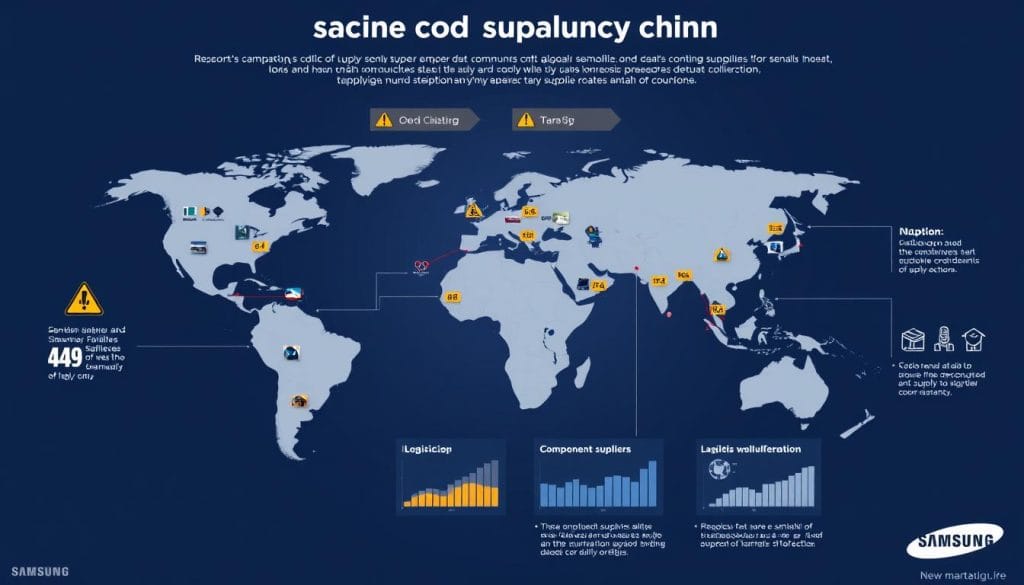
Samsung’s complex global supply chain faces multiple vulnerability points
Supply Chain Vulnerabilities in Chip Manufacturing
Samsung’s semiconductor business faces several supply chain challenges that could impact its market position. Geopolitical tensions, particularly between the United States and China, create uncertainty around technology exports and manufacturing capabilities. The company’s heavy reliance on specific raw materials, including specialized chemicals and rare earth elements, introduces additional vulnerability points.
Samsung has initiated a supply chain diversification strategy, investing in facilities across multiple countries to reduce geographic concentration risk. The company aims to have no single region represent more than 30% of its critical component sourcing by 2025.
Recent disruptions have highlighted these vulnerabilities. During the global chip shortage of 2021-2022, Samsung faced production constraints despite its vertical integration advantages. The company has since announced plans to strengthen supply chain resilience through:
- Increased inventory buffers for critical components
- Development of alternative supplier relationships
- Investment in advanced manufacturing technologies that reduce material dependencies
- Strategic partnerships with raw material suppliers, including multi-year purchasing agreements
Environmental Commitments vs. E-Waste Criticisms
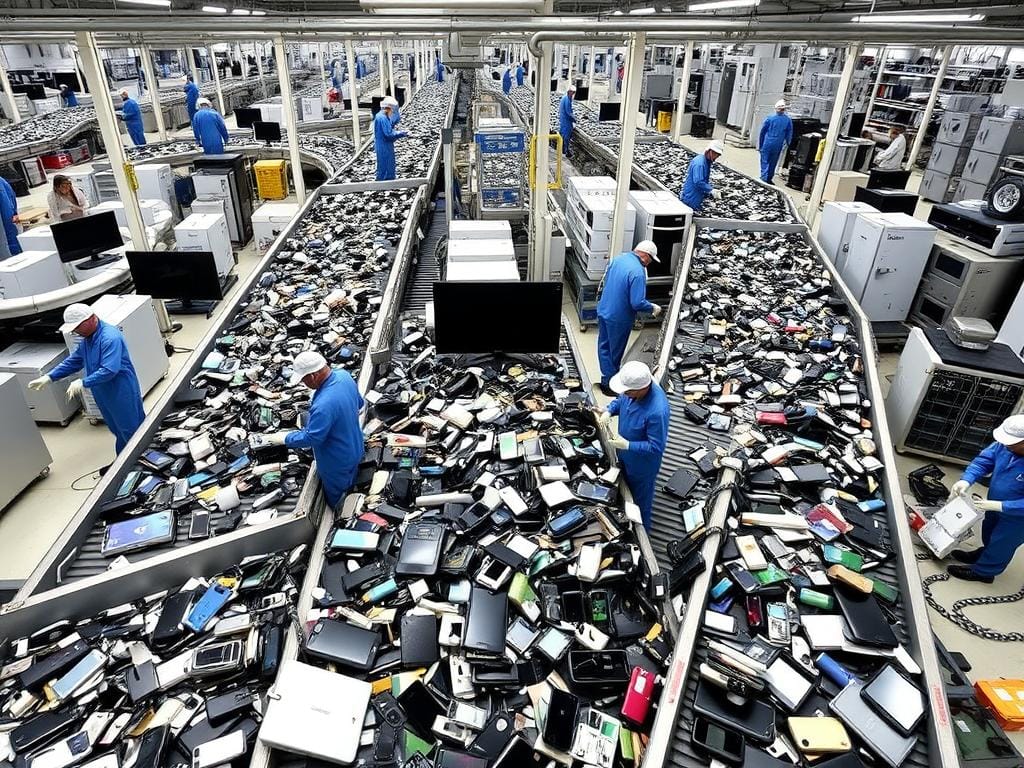
Samsung has expanded its e-waste recycling capabilities but faces criticism over product lifecycle impacts
Samsung has made significant environmental commitments, but environmental organizations continue to criticize the company’s contribution to global e-waste. The rapid product release cycles and limited repairability of some devices contradict sustainability messaging, creating reputational risks.
The company faces particular scrutiny regarding:
Environmental Commitments
- Carbon neutrality in all operations by 2050
- 100% renewable energy in all facilities by 2030
- Zero waste to landfill from manufacturing
- Expanded product take-back programs
Persistent Criticisms
- Rapid product obsolescence cycles
- Limited device repairability
- Insufficient recycled material usage
- Inadequate transparency in supply chain emissions
To address these criticisms, Samsung has announced expanded repairability initiatives, including a self-repair program launching in 2024 that will provide consumers with genuine parts, tools, and repair guides for popular devices. The company has also committed to extending software support periods for flagship devices to reduce premature obsolescence.
Conclusion: Samsung’s Path Forward

Samsung’s future vision centers on seamlessly integrated technologies that enhance everyday experiences
This Samsung company analysis reveals a corporation at a pivotal moment in its evolution. With strong financial fundamentals and a diversified business model, Samsung possesses the stability to weather current market challenges. The company’s semiconductor business, though currently pressured, remains positioned for recovery as industry dynamics improve in 2024-2025.
Samsung’s future success will depend on several key factors:
- AI integration success: The effectiveness of Samsung’s AI strategy across product lines will determine whether it can maintain premium positioning
- Foldable market expansion: Continued innovation in foldable devices could open new growth avenues as the smartphone market otherwise matures
- Semiconductor leadership: Maintaining technological advantages in memory and foundry services remains critical to long-term profitability
- Ecosystem development: Creating compelling cross-device experiences that increase switching costs for consumers
- Sustainability execution: Delivering on environmental commitments while addressing product lifecycle concerns
As competition intensifies from both established rivals and emerging players, Samsung’s ability to execute across these dimensions will determine whether it maintains its position as a technology leader. The company’s history of successful reinvention and adaptation suggests it has the organizational capabilities to navigate these challenges, but execution will be critical in an increasingly complex competitive landscape.
Will Samsung maintain its innovation throne?
Stay informed with our exclusive analysis of Samsung’s strategic moves, financial performance, and product innovations. Our quarterly reports provide insights you won’t find elsewhere.
